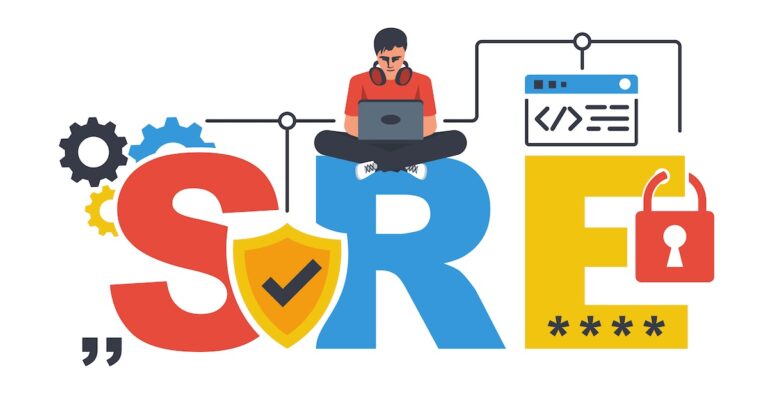Service failure is inevitable. No matter how proactive you are for incident management, service outages happen with software. Even the giants like Google and Amazon strive to provide 100 percent reliable services to users. Many business use-cases offer insights into how a service’s downtime causes businesses to lose users’ trust in their provided services. System failure or outages quickly erode user confidence with the application, and the user’s experience with the system ends up unreliable.
It is also noticed that most outages in software services are the results of deploying a change. It increases the tension between innovation and reliability. It led companies to find the right balance between innovation and change while ensuring a reduced chance of system failure whilst delivering overall happiness—with features, service, and performance. That’s where SRE or Site Reliability Engineering Services comes in.
Let’s find out more about SRE in the blog and understand why it is essential in software development.
What Is Site Reliability Engineering?
Site reliability engineering (SRE) applies software engineering principles to operations and infrastructure processes to enable organizations to build reliable and scalable software systems. SRE practices improve software system reliability across critical categories such as availability, performance, latency, efficiency, capacity, change management, monitoring, emergency response, and incident response.
Reliability engineering is applied in software development to ensure that the software satisfies the purpose for which it is made, performs well for a defined period in a given environment, and renders a fault-free operation.
Why Is Site Reliability Engineering Important in Software Development?
Today, almost every company interacts with customers by providing them software as a service. Whether it’s a hospital, bank, or even a local restaurant, every entity uses technology for communication, reservation booking, product/service updates, etc.
If your website or application faces an outage even for a few seconds, you potentially lose a customer to your competitors. You do not only lose a customer and further business from him, but you also pay a third party to maintain your website, look into the issue and solve the problem.
It costs you even more investment. It shows the importance of ensuring constant uptime of an online service.
In a software development environment, SRE principles help engineers bring value to their specific disciplines. This way, developers focus on writing new code and push out new products, whereas SRE professionals focus on observability and monitoring, and alerting, and operations teams can focus on testing, configuration, and production upkeep.
Your applications are developed with a highly strategic approach that focuses on the driving value behind the software instead of just having a software product.
Top 5 SRE Best Practices
Adopting SRE is a challenge because it requires a complete change in how software and applications are built and presented to their users. Therefore, it may take some time to work on your strategy of SRE best practices and customize it that address your operational requirements. However, there are some proven practices that, if you adopt, will speed up the processes, such as:
1. Analyze Changes Holistically
Site reliability engineering promotes a holistic approach to looking at problems and solutions. It enables teams to evaluate all incidents to understand the cause of the change and its impact on other systems and processes. The approach allows teams to understand any dependencies that bring change and how it may chain throughout the operations. Holistic analysis of change also helps teams to evaluate both short-term and long-term impacts.
2. Expand Skill Sets
Implementing SRE within a process demands highly and diversely skilled engineers and architects. Since the product’s environment and operations used to be dynamic, it requires engineers who can constantly hone their skill sets and expertise to meet the requirements. Encouraging training and professional development programs can help transform your traditional team into expert SRE teams fulfilling organizational and operational needs.
3. Do Everything To Eliminate Manual Tasks
One of the best site reliability engineering practices includes doing everything to eliminate redundancy. SRE promotes automation early on, right from a stance that supports future automation. SRE encouraged teams to do extra work upfront that saved them significant effort and time later. This way, it is possible to eliminate redundant or duplication of work as much as possible.
4. Learn From Failures
Site reliability engineering focuses on continuous improvement. Hence, it forces teams to embrace postmortems as learning opportunities. SRE provides insights that help teams to communicate the incidents instead of doing a blame game. This way, they cannot only identify issues objectively but also recognize areas that lack knowledge or skill for improvement. Learning from failures with SRE mitigates gaps essential to be addressed to improve overall performance and reliability.
5. Define Service-Level Objectives Like An End-User
For ensuring the high reliability and availability of the software services, it is crucial to identify and consider what users need and want. Defining SLO could help get the end user’s perspective and help you optimize your systems or applications for better services ensuring higher uptime. For instance, defining SLO could help you focus on request latency on the client-side rather than the service side.
Final Thoughts
SRE results highly rely on high-quality software engineering practices. SRE best practices help identify and measure faults and uncertainties in the system and enable engineers to reason about the reliability of the software.
Read also, how site reliability engineering is different from DevOps.




